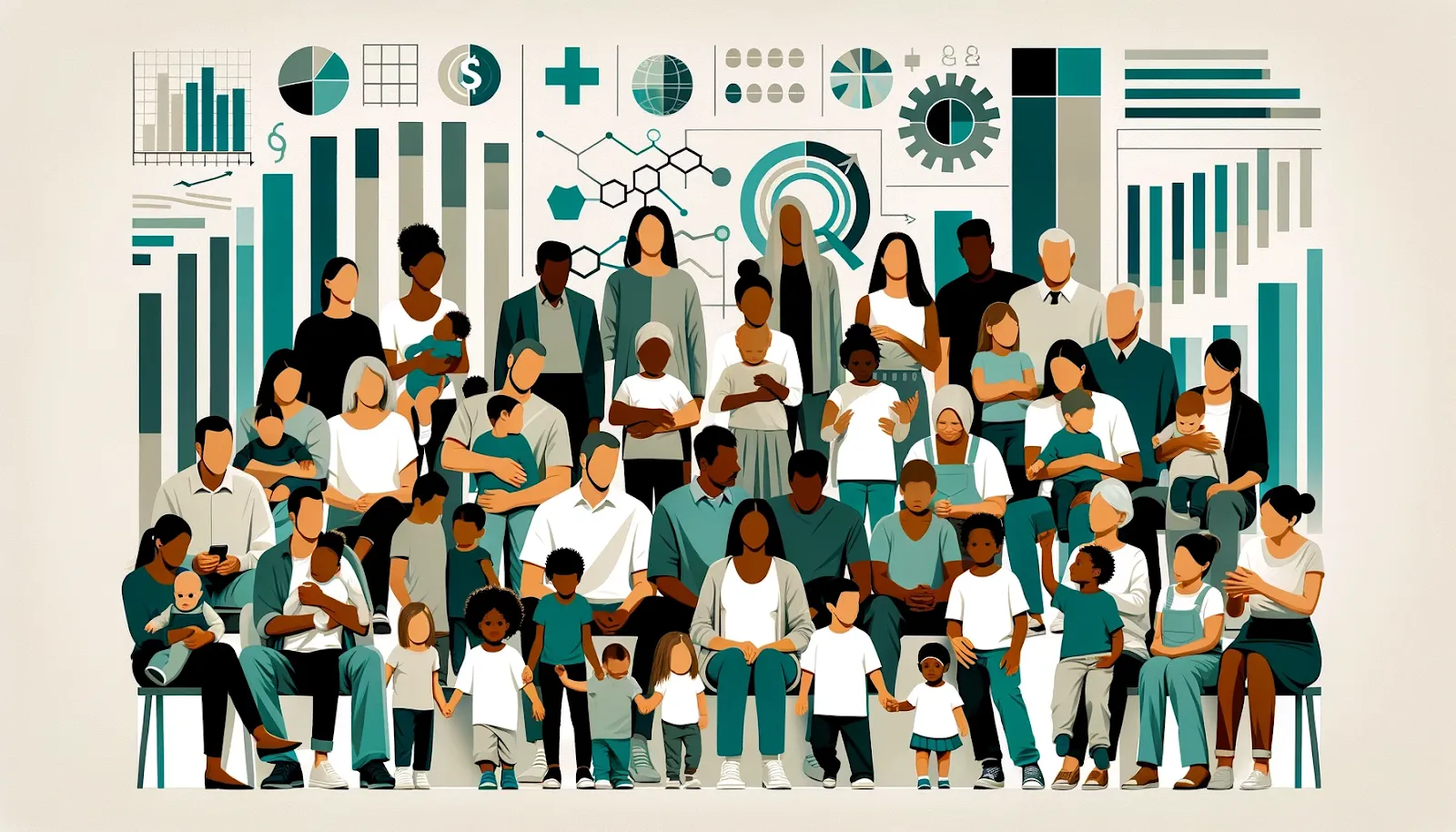Child Tax Credit Provisions of the Tax Relief for American Workers and Families Act
How the Wyden-Smith bipartisan tax package would affect families through 2025.

Contents
How the Tax Relief for American Workers and Families Act of 2024 Would Reform the Child Tax Credit
Impact on a Household
Societal Impact
Conclusion
Appendix A: Comparison to the Joint Committee on Taxation
When Politico
From 2023 to 2025 — in our static model assuming full take-up — we project the TRAFWA’s CTC reforms would:
-
Cost $40 billion
-
Lower child poverty by 4.7% in 2023, rising to 9.5% in 2025
-
Benefit 9% of the population in 2023, and about 40% in 2024–25
-
Lower the Gini index of income inequality by 0.1% in 2023, rising to 0.3% in 2025
This report describes these results in more detail, both for individual households and society at large. We’ll show the
How the Tax Relief for American Workers and Families Act of 2024 Would Reform the Child Tax Credit#
The United States provides the Child Tax Credit (CTC) in two parts: the nonrefundable CTC and the refundable Additional Child Tax Credit (ACTC). The Tax Cuts and Jobs Act of 2017 (TCJA) established the ACTC at $1,400 and set the core CTC at $2,000 per child. While the TCJA did not index the core CTC to inflation, it did index the ACTC, resulting in its rise to $1,600 by 2023 and $1,700 in 2024. The ACTC phases in at 15 cents per dollar of earnings in excess of $2,500.
The TRAFWA makes four changes to the CTC:
-
Raising the ACTC, starting in 2023: The maximum ACTC would rise from $1,600 to $1,800 in 2023, from $1,700 to $1,900 in 2024, and from $1,700 to the value of the full CTC in 2025. If inflation follows the Congressional Budget Office’s projections, the ACTC will rise to $2,100 in 2025 (see provision 4 below).
-
Phasing in the ACTC with the number of children, starting in 2023: The ACTC would phase in at 15 cents multiplied by the number of CTC-eligible children, for each dollar of earnings above $2,500.
-
Calculating the ACTC from the greater of earnings in the current and prior year, starting in 2024: Filers who earn more in 2023 than 2024 will be eligible for the ACTC based on 2023 earnings, and similarly for those who earn more in 2024 than 2025.
-
Inflation-indexing the CTC, rounded down to the nearest $100, starting in 2024: This will increase the CTC to $2,100 in 2024, and unless inflation significantly outpaces CBO projections, it will remain at $2,100 in 2025.
Impact on a Household#
In our
Before getting into the analytics, let’s plug this household into our

After clicking Calculate, we can see that they gain $9,225 total. $7,950 of that comes in 2024 and 2025, largely due to the lookback provision, though they also gain from other provisions in each year.

Now let’s return to the main app for deeper analytics. If this family has
TRAFWA would affect this family differently

The

Societal Impact#
Using PolicyEngine US v0.717.0 project that the TRAFWA CTC would cost $39.8 billion over the three years, with the cost rising each year. Appendix A compares the cost by year and provision to the Joint Committee on Taxation. Here we otherwise focus on 2024 impacts; to see other years, you can click the links and change the year in the right menu.
In 2024, households in the third income decile benefit most on an

These provisions would

The number of people with resources below the poverty line would fall 2.0%, disproportionately
Conclusion#
As the Senate considers the Tax Relief for American Families and Workers Act, we present a new analysis into the budgetary, household, and distributional impacts it would generate. We do so using a new calculator, and a new dataset tuned for accurate policy forecasting, which we will continue to develop for greater accuracy in the future. Like all forecasts, ours carry uncertainty; for instance, our assumptions around full take-up and zero behavioral responses may not fully reflect reality, and future model enhancements will provide more flexible assumptions on these points.
To stay informed on our computational modeling of TRAFWA as it proceeds, analysis of new policies, and novel software to understand policy impacts, subscribe for our latest updates.
Appendix A: Comparison to the Joint Committee on Taxation#
The Joint Committee on Taxation expanded upon their official score in
As shown in the table below, major differences include:
-
PolicyEngine assumes the $2,000 CTC rises to $2,100 in 2024; JCT assumes 2025. This is based on
PolicyEngine’s research into the law and C-CPI-U values , and aligns with the Tax Foundation’s interpretation. -
PolicyEngine finds a substantially larger impact of the lookback provision. We
build a panel from the 2018 and 2019 ASEC files , limiting to those who responded to employment and self-employment income questions, then build a quantile regression forests model to predict the distribution of prior-year earnings for each person in the CPS. This prediction algorithm adjusts the sampling distribution to match the total employment and self-employment income in the relevant year. Our model usesthese variables as predictors. JCT shared with us that the allocation of dependents to tax units within the household likely explains the discrepancy; we have filedthis GitHub issue to improve our modeling on this front.
Our estimates may also differ due to different data, take-up assumptions (we assume full take-up, including of the lookback provision), and behavioral responses (though JCT said that they project minimal labor supply effects).
To contextualize the higher estimate of the lookback provision, we used the constructed 2018–19 ASEC panel to compare the ACTC amounts between 2018 and 2019 for the same filers.
Nikhil Woodruff, Pavel Makarchuk, and Riley Kotlus contributed to this report.
-
The Center on Budget and Policy Priorities
forecasted that "In the first year, the expansion would lift as many as 400,000 children above the poverty line. [...] When the expansion is fully in effect, it would lift some 500,000 or more children above the poverty line."↩

max ghenis
PolicyEngine's Co-founder and CEO

Subscribe to PolicyEngine
Get the latests posts delivered right to your inbox.
© 2025 PolicyEngine. All rights reserved.